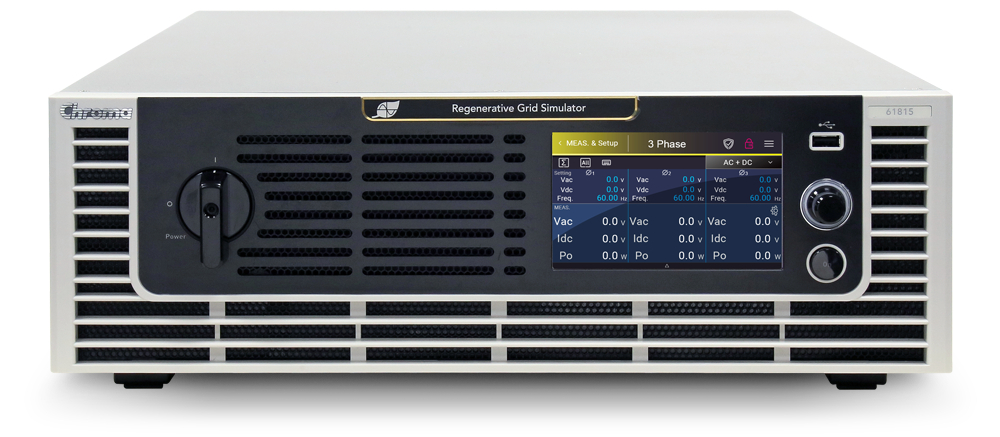Simulating the Future: Exploring the Power of AC Grid Simulator
Power of AC Grid Simulator
In the world of energy, the reliable functioning of the power grid is paramount. The modern power grid is a complex network of generators, transformers, transmission lines, and distribution systems, all working in tandem to ensure a steady supply of electricity to homes, businesses, and industries. However, ensuring the stability and efficiency of such a system requires sophisticated tools and technologies. One such tool that has emerged as indispensable in the field of power engineering is the AC grid simulator.
Understanding the AC Grid Simulator
An AC grid simulator is a device used to replicate the behavior and characteristics of an electrical grid in a controlled environment. It allows engineers and researchers to study the performance of different components of the grid, test new technologies, and simulate various operating conditions without impacting the actual power supply network.
At its core, an AC grid simulator consists of power electronic converters, control systems, and software algorithms that mimic the behavior of generators, loads, and transmission lines in an electrical grid. By manipulating voltage, frequency, and phase angles, these simulators can recreate a wide range of grid conditions, from normal operation to extreme scenarios such as faults and disturbances.
Applications of AC Grid Simulators
The applications of AC grid simulators are diverse and far-reaching, spanning both research and industry domains. One of the primary uses of these simulators is in the development and testing of power electronics devices and renewable energy systems.
With the growing integration of renewable energy sources like solar and wind power into the grid, there is a need to understand how these intermittent sources interact with the existing infrastructure. AC grid simulators provide a controlled environment to study the impact of renewable energy integration on grid stability, power quality, and overall system performance.
Moreover, AC grid simulators play a crucial role in the design and testing of grid-connected inverters, which are essential components of solar photovoltaic and wind turbine systems. By subjecting inverters to various grid conditions, engineers can ensure their compliance with grid codes and standards, thereby enhancing the reliability and safety of renewable energy installations.
Beyond renewable energy, AC grid simulators find applications in the development of smart grid technologies, electric vehicle charging infrastructure, and grid resilience solutions. They enable researchers to investigate novel control strategies, evaluate the effectiveness of demand response programs, and assess the impact of emerging technologies on grid dynamics.
Advantages of AC Grid Simulators
The adoption of AC grid simulators offers several advantages over traditional testing methods and field trials. Firstly, simulators provide a safe and cost-effective means of conducting experiments without risking damage to real-world equipment or disrupting the power supply to consumers. This is particularly important when testing new control algorithms or hardware prototypes that may have unpredictable outcomes.
Secondly, AC grid simulators offer a high degree of flexibility and repeatability in experimental setups. Engineers can easily recreate specific grid conditions, introduce faults or disturbances, and observe the system’s response under controlled conditions. This level of control is invaluable for conducting comparative studies, optimizing system parameters, and validating theoretical models.
Furthermore, AC grid simulators enable accelerated testing of equipment by simulating years’ worth of operating conditions in a fraction of the time. This accelerated testing reduces the time-to-market for new technologies and allows manufacturers to identify potential issues early in the development process, thereby improving product reliability and performance.
Challenges and Future Directions
While AC grid simulators offer significant benefits, they also present challenges and limitations. One of the key challenges is the accurate modeling of grid components and their dynamic behavior. Achieving realistic simulations requires sophisticated models that capture the nonlinearities, uncertainties, and time-varying characteristics of the grid accurately.
Another challenge is the scalability of simulators to accommodate large-scale grid models and complex interconnected systems. As power grids continue to evolve with the integration of distributed energy resources and advanced control schemes, there is a need for scalable simulation platforms capable of handling increasingly complex scenarios.
Looking ahead, the future of AC grid simulators lies in advancing simulation techniques, improving model accuracy, and enhancing hardware-in-the-loop capabilities. With ongoing developments in power electronics, computational methods, and data analytics, AC grid simulators will continue to play a crucial role in shaping the future of the electric power industry.
In conclusion, AC grid simulators represent a powerful tool for studying, testing, and advancing the state-of-the-art in power systems engineering. From renewable energy integration to grid modernization efforts, these simulators offer a versatile platform for innovation and experimentation. As the demand for reliable, efficient, and sustainable energy solutions grows, AC grid simulators will remain indispensable in driving progress towards a smarter and more resilient power grid.


